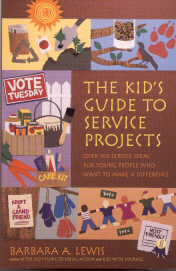
Author: Gren Mortenson and Susan L. Roth
Illustrated/"Collages" By: Susan L. Roth
Grade: K-4
Buy it at Amazon: http://www.amazon.com/Listen-Wind-Greg-Mortenson/dp/0803730586
Buy it at Barnes & Noble: http://search.barnesandnoble.com/Listen-to-the-Wind/Greg-Mortenson/e/9780803730588
This book tells a story of the children of Korphe, a little village in Baltistan in Pakistan. The children of Korphe live in the mountains. They did not have a school, so they had lessons outside and wrote with sticks on the ground. One day, a stranger by the name of Greg Mortenson stumbled into the Korphe's village while being lost. The children of Korphe fed Dr. Greg and gave him a bed. When Dr. Greg was well enough to go home, he asked the wisest man to help him think of something special he could for the the Korphe. He promised the children he would come back to the village and help build a school for them. One year later, Dr. Greg came back to the village with lumber, cement and tools that would be needed to build a school. They built a bridge to deliver the materials and after a few months, the children of Korphe had their very own school!
SJE: This book is the 6th social justice element. The children in the book were dedicated to finding a way to build their own school. Before their school was built, the children of Korphe had lessons outside and wrote with sticks on the ground. In Korphe, the teacher came just three times a week, and the students were expected to study independently every day. When Dr. Greg stumbled upon their village, he wanted to do something about their unfortunate predicament. The Korphe treated Dr. Greg so kindly, he was determined to think of something special he could do for them in return. He made the children a promise and put his desire to build them a school into action. Dr. Greg collected tools, lumber and cement to help build their school. Afterwards, he helped them build a bridge to help get the supplies to the mountain on the other side of the river. Over all, this book helps children understand how they can make a difference in their community (village) development and in the quality of their education. Dr. Greg and the children of Korphe felt passionate about education. He could see their interest in learning and wanted to make a change firsthand! He was able to provide a wonderful opportunity for the Korphe children and their village. The school was a success and the students and community were extremely pleased!
How I would use the book: I would use this book to help teach students that we shouldn't let anything stop us from helping others, especially those who have helped us. In the process of Dr. Greg getting better, he developed a strong love for the Korphe community. He had a passionate desire to repay them for everything they had done for him. In many realistic situations, we develop desires to take social action with issues that affect our communities. As a future teacher, I may consider using this book to brainstorm things we can do to improve our own community.
Teacher Lessons: http://www.teachervision.fen.com/literature-guide/printable/60117.html
Ariella Luberto





